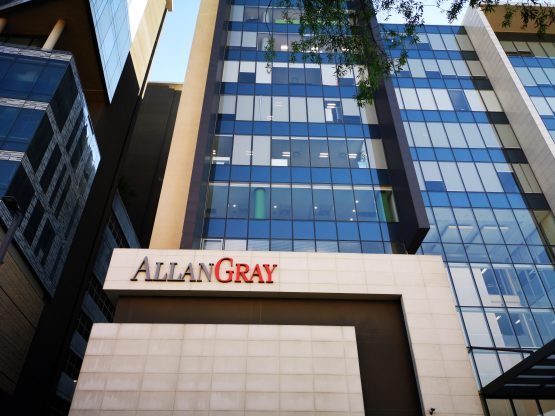
When tax-free savings accounts (TFSAs) were introduced in South Africa in 2015, the National Treasury ruled that no performance fees could be applied.
Most notably, this affected South Africa’s largest unit trust.
The Allan Gray Balanced fund has always charged a performance fee. In order to make it available to investors in a TFSA, Allan Gray was therefore required to launch a separate fund – the Allan Gray Tax-Free Balanced fund – which charges a flat management fee.
Performance fee philosophy
The argument in favour of performance fees is that they align the interests of the fund manager and clients. If the fund does well, both the manager and the client are rewarded. If it does poorly, they share the pain.
It is important to be clear that this is not the case with all performance-fee structures in South Africa. In fact, most are asymmetrical, in that the fund manager earns a flat fixed-base fee regardless of performance. That means that they feel no loss when the fund underperforms, but help themselves to a share of the upside.
Allan Gray, by contrast, employs symmetrical performance-fee structures. The manager will earn a higher fee when the fund outperforms its benchmark and a lower fee when it underperforms.
Performance analysis
The launch of the Allan Gray Tax-Free Balanced fund has, however, allowed investors to compare the performance of this fund, which does not charge a performance fee, with that of the original Allan Gray Balanced fund to see which ultimately delivers a better outcome.
The Allan Gray Tax-Free Balanced fund was launched in February 2016. Calculated monthly, there have been 47 rolling one-year periods since that point. Analysing the relative performance of the two funds over these periods is revealing.
For 33 of them, the Allan Gray Tax-Free Balanced fund has outperformed the Allan Gray Balanced fund.
For six of these rolling one-one periods, the funds performed on par with each other.
In only eight instances did the Allan Gray Balanced fund outperform.
In other words, the version of the fund charging a flat fee outperformed 70% of the time. It only underperformed 17% of the time.
A simple point-to-point performance analysis is equally conclusive: Since the start of March 2016 (its first full month in existence), the Allan Gray Tax-Free Balanced fund has returned 5.0% per annum. The Allan Gray Balanced fund has returned 4.6% per annum over the same period.
Counter-argument
This would appear to offer conclusive evidence that performance fees do not lead to better outcomes.
However, Earl van Zyl, head of product development at Allan Gray, told Citywire that it is important to note that while the two funds are similar, they are not exactly the same.
“Asset allocation between the two funds can be, and has been meaningfully different,” said Van Zyl. “It could differ as much as a few percent within an asset class. That has made a difference to the gross returns of the two funds, which has been enough to make a difference to the net return to clients.
“As a simple example, at the end of November 2020, the balanced fund had returned 3.0% for the year with a one-year TIC [total investment charge] of 0.88%, which, very roughly, is a gross return of 3.88%. The tax-free balanced fund returned 3.4% with TIC of 1.61%, for a gross return of 5.01%.
“This is a very rough approximation, but it illustrates that the differences in outcomes between these funds are significantly about both the differences in asset allocation and fee structure.”
Outcomes
The question that argument raises, however, is why the asset allocation differences would consistently favour one fund over the other when they are managed by the same team.
A possible explanation that Van Zyl offered is that fund flows have affected the ability of the portfolio managers to exactly match how the funds are positioned over time.
“One of the big differences in the funds is that clients have been withdrawing from the Balanced fund over the past few years on a net basis, but have been contributing to the Tax-Free Balanced fund,” said Van Zyl. “The difference in flows and the timing and sizes of flows means that the portfolio managers can’t always match the asset allocation of each fund exactly where they are buying and selling securities.”
Nevertheless, investors should ask whether it is telling that the fixed-fee fund has consistently outperformed.
If performance fees are, ultimately, meant to lead to better outcomes for clients, why has this not played out in practice with these two portfolios?
Alignment
Van Zyl said that it is important to note that, over the past few years, investors have actually paid a lower fee in the Balanced fund than in the Tax-Free Balanced fund. The three-year TIC on the former is 1.34%, compared to 1.67% on the Tax-Free Balanced fund. Over the past year, it is 0.88% compared to 1.61%
This, he said, is evidence that performance fees are working in the way they are meant to.
“Our argument is that performance fees align the fee that is charged in the fund with the performance of the fund,” said Van Zyl. “That is what you see. The performance of the Balanced fund has gone down in the last year, and the fee has come down. Whereas the fee in the Tax-Free Balanced fund has remained flat.
“We would not argue that the Balanced fund will always outperform because it charges a performance fee. We are charging a performance fee because the client fee experience will vary with the performance generated relative to the benchmark. That should encourage clients to stay invested in periods of lower or under performance.”
Patrick Cairns is South Africa Editor at Citywire, which provides insight and information for professional investors globally.
